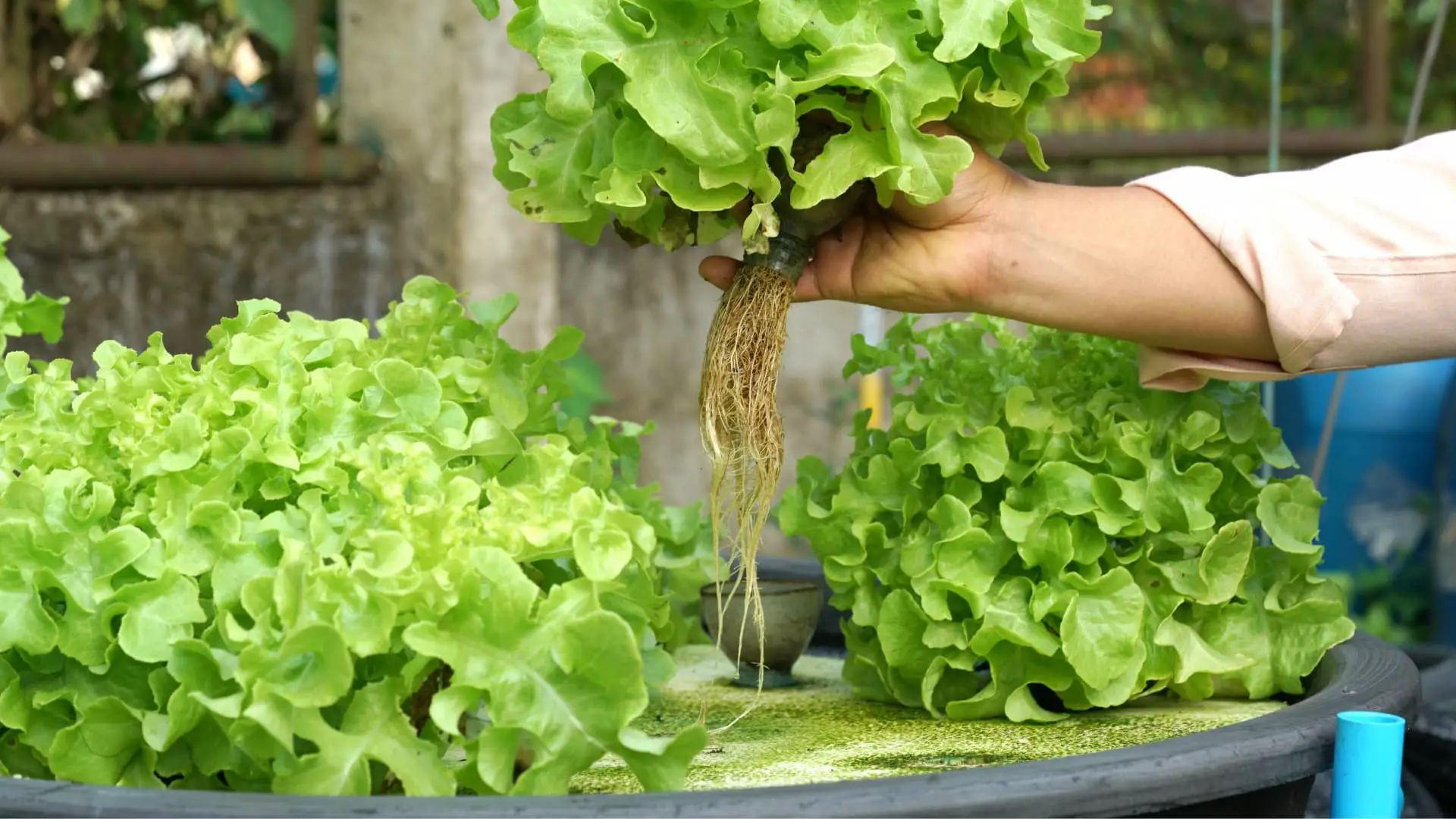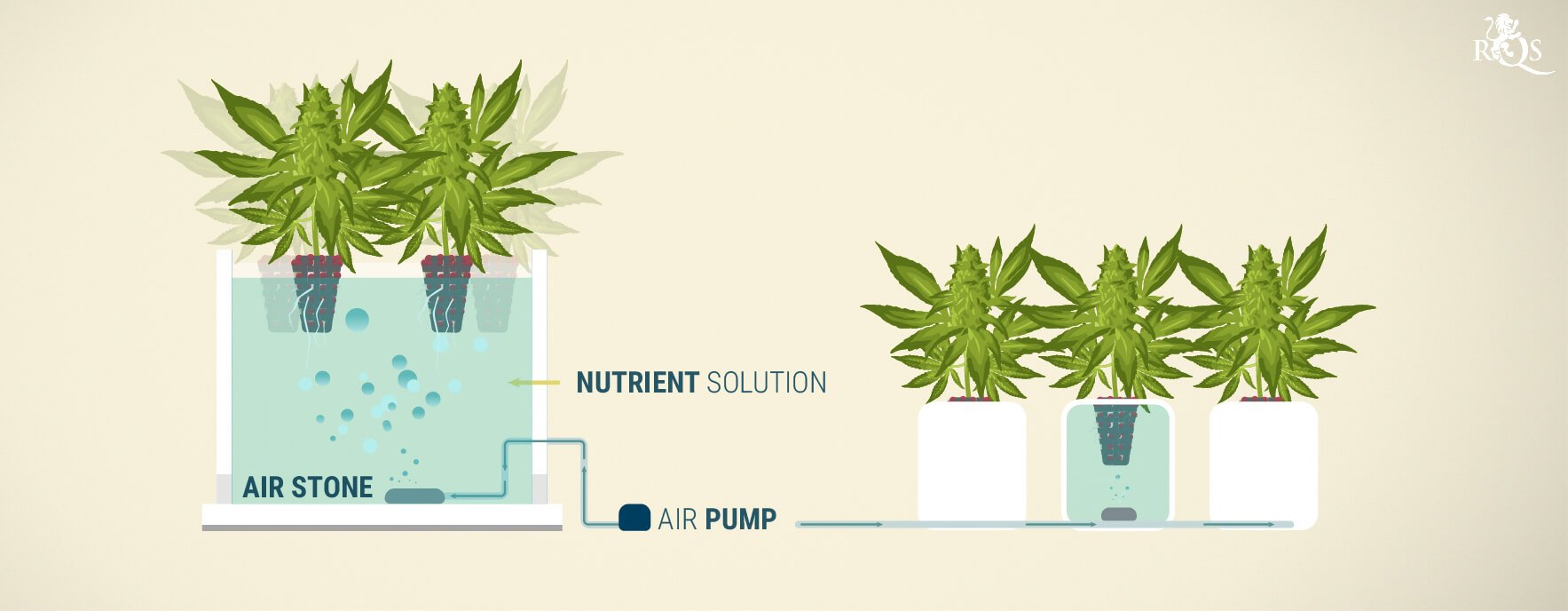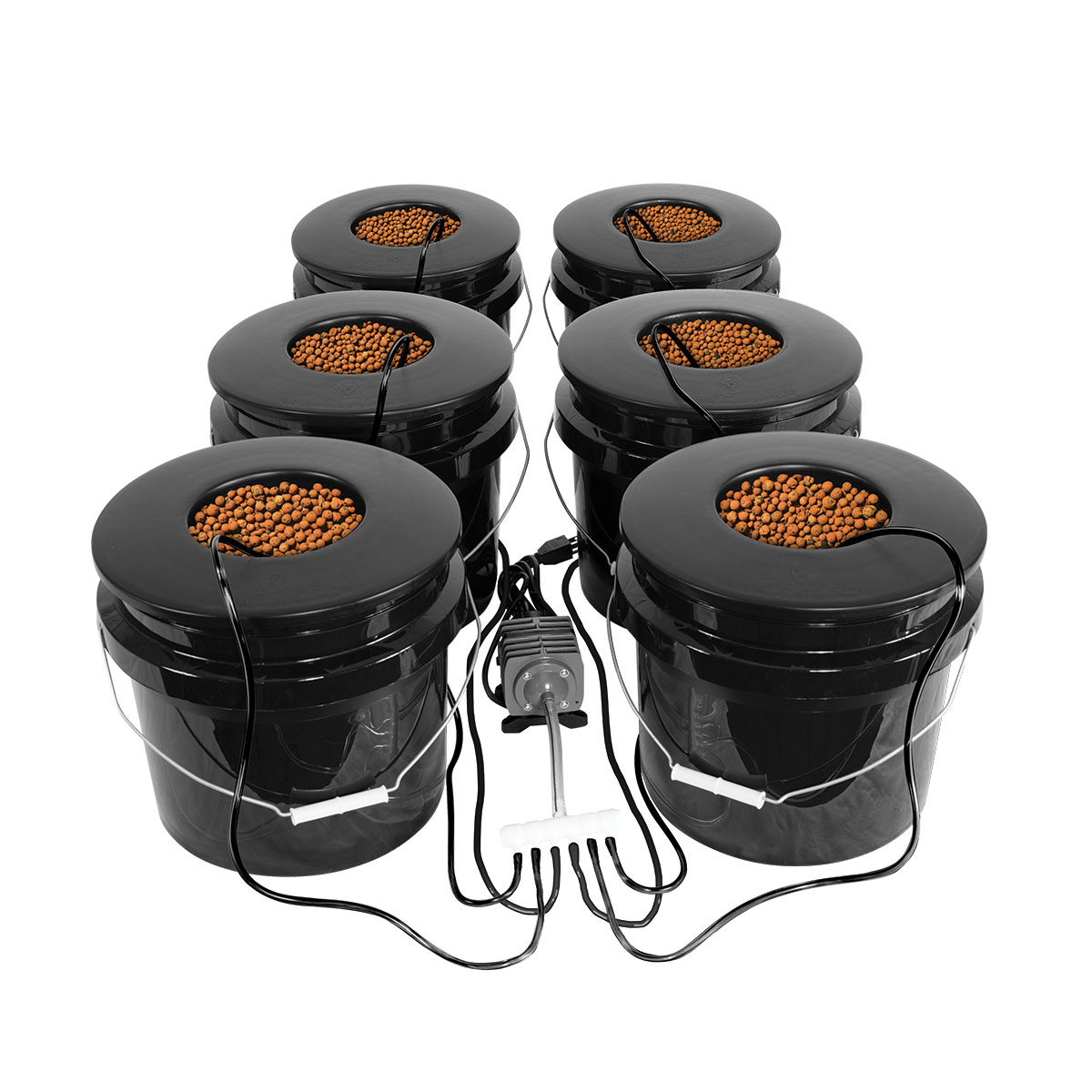Introduction
Building a simple DWC (Deep Water Culture) hydroponic system is an excellent way to grow plants without the need for soil. With this system, plants are suspended in a nutrient-rich solution that oxygenates the roots. As someone who has experience in hydroponics, I can attest to the effectiveness and simplicity of this method.
Advantages of building a simple DWC hydroponic system
- Increased growth rate: With the roots submerged in a nutrient solution, plants have direct access to everything they need for optimal growth. This leads to faster germination, vegetative growth, and ultimately, bigger yields.
- Water conservation: Unlike traditional soil-based gardening, DWC hydroponics uses less water. The system recirculates the nutrient solution, minimizing water waste and making it an environmentally friendly option.
- Less maintenance: The simplicity of a DWC system means less time spent on maintenance tasks. Once set up properly, the system requires only periodic monitoring and adjustment of nutrient levels. This makes it a great choice for those with busy schedules.
- Year-round growing: DWC hydroponics allows for year-round growing, regardless of weather conditions. By controlling factors such as light, temperature, and nutrients, you can create an optimal environment for your plants to thrive.
- Space efficiency: DWC hydroponics is ideal for those with limited space. The system can be set up in small areas such as balconies, patios, or even indoors. This makes it accessible to urban gardeners or anyone who wants to maximize their growing potential.
In conclusion, building a simple DWC hydroponic system offers numerous advantages, from increased growth rates to water conservation and year-round growing capabilities. With a little effort and the right resources, you can enjoy the benefits of this efficient and sustainable gardening method.
Materials and Tools Needed
List of materials needed for a simple DWC hydroponic system
To build a simple DWC hydroponic system, you will need the following materials:
- A container or reservoir: This will hold the nutrient solution and support the plants.
- Net pots or plant baskets: These are used to hold the plants in place while allowing the roots to reach the nutrient solution.
- Growing medium: Choose a medium like clay pellets, coco coir, or perlite that provides support for the plants’ roots.
- Air pump and air stones: Oxygenation is crucial for the health of the plants. An air pump and air stones will help to oxygenate the nutrient solution.
- pH meter and pH adjustment solutions: Monitoring and adjusting the pH level of the nutrient solution is important for optimal plant growth.
Maintenance and care tips for a simple DWC system
To ensure the success of your DWC hydroponic system, consider the following maintenance tips:
- Regularly monitor the pH and nutrient levels of the solution to maintain optimal conditions for the plants.
- Inspect the air pump and air stones regularly to ensure proper oxygenation.
- Clean the reservoir and replace the nutrient solution every 1-2 weeks to prevent the build-up of algae and bacteria.
- Check the roots for any signs of disease or rot and remove any affected plants to prevent spread.
Conclusion highlighting the convenience and effectiveness of a simple DWC system
Building a simple DWC hydroponic system provides a convenient and effective way to grow plants without soil. With proper maintenance and care, this system can yield impressive results in terms of plant growth and productivity.
Tools required for building the system
The tools that will be helpful in building your simple DWC hydroponic system include:
- Drill and drill bits: You may need to drill holes in the container or reservoir for the net pots and air lines.
- Utility knife or scissors: These will come in handy for cutting holes in the lid of the container or trimming the plants’ roots.
- Measuring container: You will need a measuring container to prepare the nutrient solution accurately.
- Screwdriver: Depending on the design of your system, a screwdriver might be needed for assembly.
Remember to follow safety precautions when using these tools and refer to the specific instructions for your system.

Step-by-Step Guide: How to Build a Simple DWC Hydroponic System
Step 1: Setting up the reservoir
The first step in building a DWC (Deep Water Culture) hydroponic system is to set up the reservoir. Choose a container large enough to hold your nutrient solution. Make sure it is lightproof to prevent algae growth. Fill the reservoir with water and add the required amount of hydroponic nutrients according to the instructions.
Step 2: Installing the air pump and air stone
To provide oxygen to the plant roots, install an air pump and air stone in the reservoir. The air pump will push air through the air stone, creating oxygen bubbles in the nutrient solution. This oxygenates the roots and prevents them from suffocating.
Step 3: Adding the net pots and growing medium
Next, place net pots into the lid of the reservoir. Fill each net pot with a growing medium such as perlite or clay pellets. These materials provide support for the plants and allow for adequate air and water circulation around the roots.
Step 4: Transferring the plants to the system
Carefully remove the plants from their current containers and gently wash off the soil from the roots. Place each plant into a net pot, ensuring that the roots are completely covered by the growing medium.
Step 5: Adjusting nutrient levels and pH
Regularly monitor the nutrient levels in the reservoir and adjust them as necessary. Also, check the pH level of the nutrient solution using a pH testing kit. Adjust the pH using pH up or pH down solutions to maintain an optimal level for nutrient uptake.
Step 6: Maintaining the DWC hydroponic system
Maintain your DWC hydroponic system by regularly checking the water level in the reservoir and topping it up when needed. Monitor the plant’s growth and health, and make any necessary adjustments to the nutrient levels or pH. Clean and sanitize the system periodically to prevent the buildup of bacteria or algae.
By following these six steps, you can build a simple and effective DWC hydroponic system to grow plants without soil. Remember to regularly monitor and maintain the system to ensure healthy plant growth and maximize yield.

Benefits and Challenges of DWC Hydroponics
Benefits of using a DWC hydroponic system
As an avid hydroponics enthusiast, I have found that DWC (Deep Water Culture) is one of the simplest and most effective systems for growing plants. Here are some key benefits of using a DWC hydroponic system:
- Increased oxygenation: DWC systems provide a constant supply of highly oxygenated nutrient solution to the plant roots. This promotes faster and healthier growth compared to traditional soil cultivation.
- Efficient nutrient uptake: In a DWC system, the plant roots have direct access to nutrients dissolved in the water. This allows for optimal absorption and utilization, leading to robust plant growth and higher yields.
- Water and resource conservation: DWC hydroponics uses significantly less water compared to traditional soil-based farming. The recirculation of nutrient solution in the system minimizes water waste, making it an environmentally friendly choice.
Challenges and potential issues to watch out for in DWC hydroponics
While DWC hydroponics offers numerous benefits, it also comes with a few challenges. Here are some potential issues to be aware of when setting up a DWC system:
- Root rot: The high levels of moisture in DWC systems can create an environment conducive to the growth of harmful bacteria and fungi, leading to root rot. Regular monitoring and maintenance, including proper oxygenation and sterilization techniques, can help prevent this issue.
- System leaks: DWC systems rely on an airtight and watertight container. Any leaks can disrupt the oxygenation and nutrient delivery, negatively impacting plant health. Regular checks of the system’s seals and connections are essential to avoid leaks.
- Nutrient and pH management: Maintaining the proper nutrient and pH levels in the reservoir is crucial for plant health. Regular monitoring and adjustment of nutrient solutions are necessary to ensure optimal growth and prevent nutrient deficiencies or imbalances.
By understanding the benefits and challenges of DWC hydroponics, you can effectively set up and maintain a simple and efficient hydroponic system for cultivation.

Tips for Successful DWC Hydroponics
Tips for optimal plant growth and productivity in DWC hydroponics
- Oxygenation: In a Deep Water Culture (DWC) system, oxygen is crucial for roots to thrive. Ensure that the air stones or diffusers in your reservoir are providing adequate oxygenation to prevent root rot and promote healthy growth.
- pH monitoring: Regularly check and adjust the pH levels of your nutrient solution. Most plants thrive in slightly acidic conditions, with a pH range of 5.5 to 6.5. Use a pH meter or testing kit to maintain the ideal pH balance for optimal nutrient absorption.
- Nutrient solution management: Maintain a consistent and well-balanced nutrient solution. Follow the manufacturer’s instructions for nutrient dosages and ensure that your plants are getting the appropriate levels of essential nutrients. Regularly monitor and adjust nutrient levels to avoid deficiencies or toxicities.
- Lighting: Provide the correct type and intensity of light for your plants. LED grow lights are often recommended for DWC hydroponics due to their energy efficiency and ability to provide the full light spectrum that plants require for photosynthesis. Position the lights at the appropriate distance from the plants to avoid burning or stretching.
Common mistakes to avoid when building and maintaining a DWC system
- Overcrowding plants: Give your plants enough space to grow and spread their roots in the water reservoir. Overcrowding can lead to competition for nutrients and hinder plant growth.
- Contamination: Maintain cleanliness in your DWC system to prevent the growth of harmful bacteria, algae, or pests. Regularly clean and sterilize the reservoir, air stones, and other components to minimize the risk of contamination.
- Temperature regulation: DWC systems are sensitive to temperature fluctuations. Maintain the water temperature between 65°F and 75°F for optimal plant growth. Use a water chiller or heater if necessary to maintain a consistent temperature.
- Water level management: Ensure that the water level in the reservoir is maintained at the appropriate depth. Too high or too low water levels can negatively impact oxygenation and nutrient uptake.
By following these tips and avoiding common mistakes, you can build and maintain a successful DWC hydroponic system that promotes healthy plant growth and maximizes productivity.

Conclusion
Summary of the benefits and simplicity of building a DWC hydroponic system
Building a DIY DWC hydroponic system offers several benefits. It allows you to grow healthy plants with minimal effort, eliminates the need for soil, and enables you to control the nutrient levels for optimal growth. The simplicity of the system makes it accessible to both beginners and experienced gardeners alike. By following a few basic steps and gathering the necessary materials, you can set up your own DWC hydroponic system in no time.
Encouragement to try building your own system and start growing your own plants
If you’ve been considering diving into the world of hydroponics, building a DWC system is a great place to start. The simplicity and effectiveness of this system make it a popular choice among hobbyists and professional growers alike. By taking the time to research and gather the necessary materials, you can create a thriving hydroponic garden right in your own home. So, don’t hesitate to give it a try! Start growing your own plants and enjoy the benefits of hydroponic gardening.
- Hydroponics
- Domain: nal.usda.gov (.gov)
- Published Date: March 14, 2016
- Description: This resource from the National Agricultural Library, a part of the USDA, provides a comprehensive overview of hydroponics, including deep water culture (DWC). It offers a range of resources and information to help individuals understand the principles and practices of hydroponic farming, including DWC hydroponics.
- Hydroponics
- Domain: sustainability.ucsb.edu (.edu)
- Published Date: January 1, 2023
- Description: Hosted by the University of California, Santa Barbara, this page offers insights into hydroponics, including DWC hydroponics. It provides information on the sustainable practices involved in hydroponic farming, helping individuals learn how to set up and maintain a hydroponic system effectively.
- Small-scale hydroponics
- Domain: extension.umn.edu (.edu)
- Published Date: January 1, 2023
- Description: This resource from the University of Minnesota Extension discusses small-scale hydroponics, including deep water culture systems. It offers guidance on how to start a small-scale hydroponic system, providing tips and information to help individuals successfully set up a DWC hydroponic system.
from HydroponicHarmony https://hydroponicharmony.com/how-to-build-a-simple-dwc-hydroponic-system/
No comments:
Post a Comment